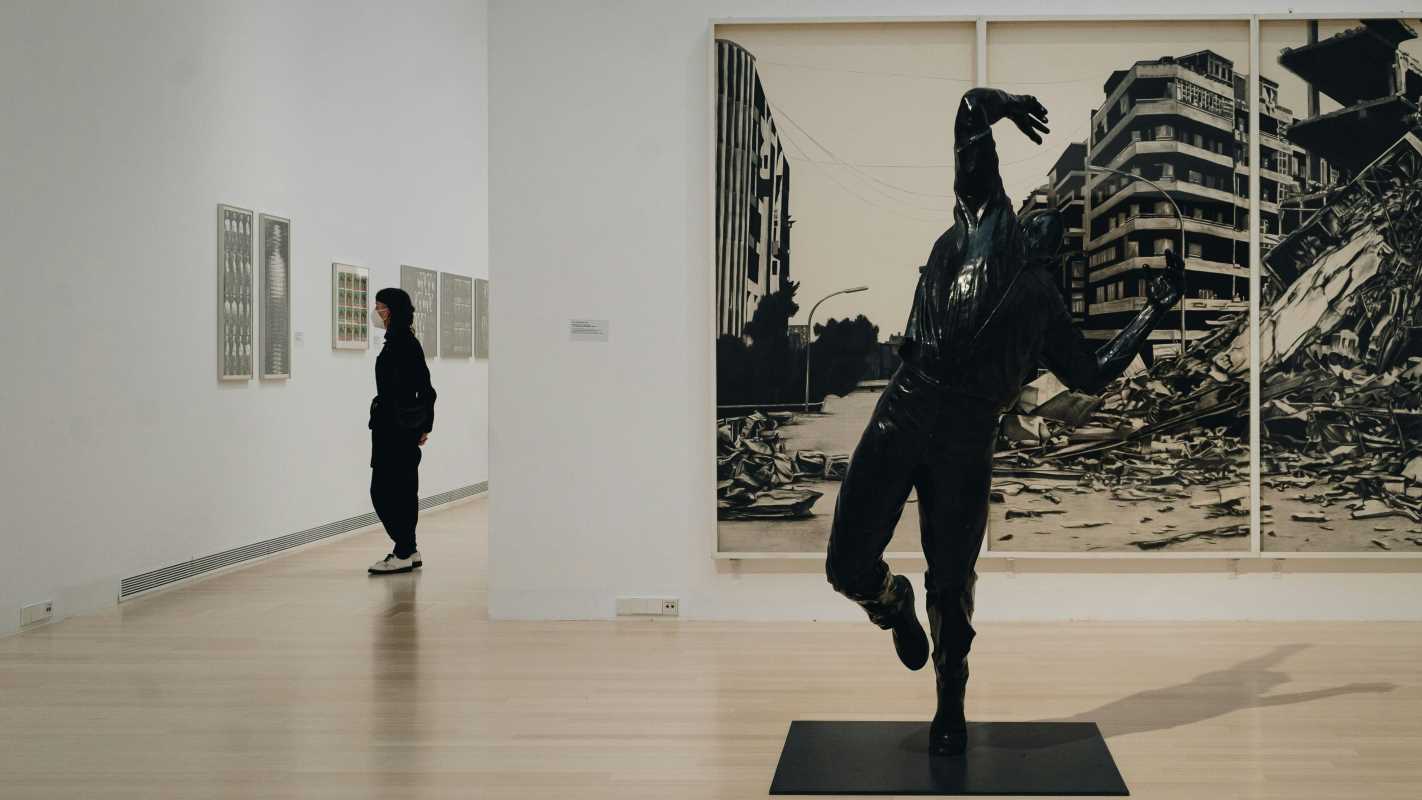Art, much like fashion, has its moments. Some movements rise to prominence, leaving an indelible mark on history, while others fade into obscurity, eclipsed by more prominent styles or changing tastes. Today, we’re uncovering five fascinating and underappreciated art movements that were once celebrated, only to be overshadowed by art world heavyweights like Impressionism and Modernism.
Each of these movements brought something unique to the artistic landscape, and though they’ve been overshadowed, their legacies linger in unexpected ways.
The Aesthetic Movement
Emerging in Victorian-era England, the Aesthetic Movement was the rebellious teenager of its time. It turned its nose up at the moralistic and utilitarian approach to art common during the Industrial Age, declaring instead that art should exist purely for beauty's sake. No life lessons, no social commentary, just gorgeous, indulgent creations to please the eye.
Think intricate wallpaper, decadent furniture, and paintings steeped in luxurious colors and elaborate detail. Artists like James McNeill Whistler and Dante Gabriel Rossetti became its poster boys, creating sensual, dreamlike pieces that were as flamboyant as your friend who insists on wearing silk to brunch. Oscar Wilde, a diehard fan, even proclaimed, “All art is quite useless,” a charmingly cheeky poke at the movement’s priorities.
But why did it fade? Critics scorned it as shallow, claiming it prioritized beauty over substance. By the early 20th century, the art world turned toward movements with stronger narratives, leaving the Aesthetic Movement to decorate only the finest antique shops and museum corners.
Orphism
You’ve probably heard of Cubism, but what about its colorful cousin, Orphism? Born in Paris in the 1910s, this offshoot blended Cubist structure with the expressive luminosity of colors. Orphism, named after the mythic poet Orpheus (because why not aim for mystical gravitas?), was championed by artists like Robert and Sonia Delaunay. Their work turned geometric abstraction into a vibrant kaleidoscope of swirling shapes and electric hues. If Cubism was all sharp angles and muted tones, Orphism was like someone flipped the brightness filter all the way up.
The movement was bold, experimental, and brimming with optimism. It explored how color could evoke emotional and musical echoes, essentially creating visual symphonies. Sonia Delaunay even designed textiles and costumes inspired by Orphism’s energetic aesthetic.
Its downfall came swiftly. Critics dismissed it as lacking depth or intellectual rigor compared to heavier movements like Surrealism or Constructivism. Orphism dissolved into art history, overshadowed by the very movements it had inspired, including the advent of Abstract Modernism. Still, evidence of its influence lingers in color theory and bold contemporary graphics.
Precisionism
Once heralded as America’s first homegrown modern art movement, Precisionism embraced the changing industrial landscape of the 1920s and 1930s. It celebrated architecture and machinery with clean, angular compositions that were slightly surreal in their stark perfection. Precisionist paintings often depicted factories, skyscrapers, and rural silos with an eerie stillness, turning ordinary infrastructure into quiet, monumental icons.
Artists like Charles Demuth and Charles Sheeler were key figures in this movement, and their works feel almost prophetic, celebrating a version of America that seemed perfectly poised to march confidently into the future. Precisionism was obsessed with order and clarity, reflecting the cultural fascination with progress, technology, and rapid urbanization during the interwar years.
Sadly, the rise of Abstract Expressionism in the post-war era left Precisionism looking overly nostalgic and restrained. Its love of rationality and sleek industrial forms seemed out of sync with the chaotic energy that defined the mid-20th century. It slipped into obscurity, though its influence can still be felt in contemporary minimalist architecture and design.
Synchromism
If you’ve never heard of Synchromism, don’t worry, most people haven’t. Founded in 1912 by American artists Morgan Russell and Stanton Macdonald-Wright, Synchromism was one of the earliest movements to explore abstract color relationships. The name literally translates to “with color.” Their central belief was that color, like music, could be orchestrated to evoke harmony and emotion without needing figurative elements.
Synchromist works had a striking, almost cosmic quality, combining prism-like bursts of color with semi-abstract forms that felt like they were vibrating off the canvas. The movement aimed to break down barriers between painting and music, creating a multisensory experience long before the term “immersive art” became a buzzword.
Despite its ambition, Synchromism struggled to gain traction. Critics dismissed it as a derivative offshoot of Cubism, and its small pool of practitioners limited its impact. Plus, Russell and Macdonald-Wright’s insistence on naming it something as esoteric as “Synchromism” probably didn’t help. Try explaining that over cocktails. Still, its exploration of color influenced later abstractionists in subtle but meaningful ways.
Rayonism
Imagine the striking visuals of light refracted through glass, scattered in dynamic beams and jagged planes. That’s Rayonism in a nutshell. Born in Russia in 1911, it was spearheaded by artists Mikhail Larionov and Natalia Goncharova as part of a broader movement toward avant-garde innovation. Inspired by emerging scientific ideas around light and energy, Rayonist paintings used intersecting lines and color to suggest forms dissolving into radiant energy.
This wasn’t just abstraction for abstraction’s sake. It was rooted in a fascination with technological advances like electric lighting and photography, which were transforming everyday life. Rayonism merged these influences with a Russian flair for experimental aesthetics, resulting in works that felt modern, kinetic, and deeply symbolic.
Despite its brilliance, Rayonism burned out quickly, overshadowed by heavyweight movements like Suprematism and Constructivism, which were seen as more relevant to the socio-political turbulence of early 20th-century Russia. Today, it’s little more than a footnote in art history books, but its shimmering energy lives on in digital art and optical experimentation.
Appreciating What’s Lost
These forgotten movements remind us that art history isn’t just a single, continuous narrative of genius. It’s full of twists, turns, and forks in the road, each contributing something unique. The Aesthetic Movement luxuriated in beauty for its own sake. Orphism showed us the joy of color. Precisionism bridged realism and abstraction. Synchromism and Rayonism played with new ways of thinking about light and color.
They may not have the household-name status of Impressionism or Surrealism, but these forgotten movements serve as steppingstones in art’s evolution. Without them, the masterpieces we revere today might never have existed. It’s a reminder to look closer at what history has left in the shadows because sometimes the real treasures are hiding there.

.jpg)





